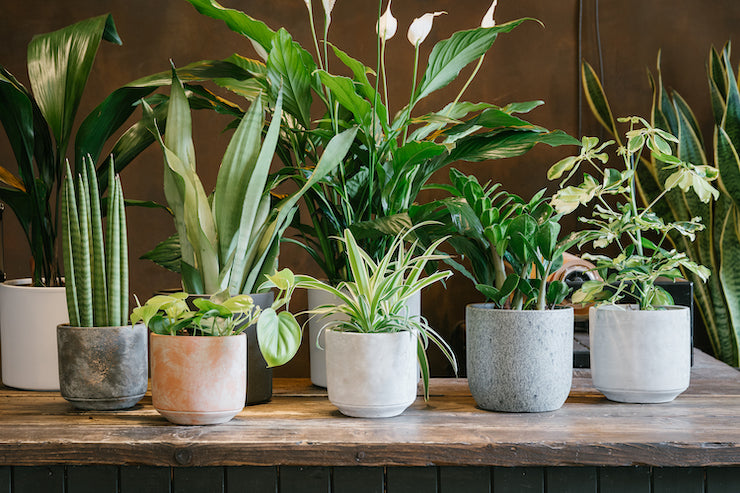
A Care Guide for Dracaena
Dracaena, commonly referred to as Dragon Trees, are part of the Asparagaceae family and come in around 120 different tree and shrub forms.
This genus can be found growing naturally in South-East Asia and Madagascar and are renowned for their shade and drought tolerant nature. Most popular are ‘marginata’ and ‘Janet Craig’ forms for their compact, upright growing habit topped with bunches of bushy leaves. However, lesser-known varieties such as the Dracaena reflexa ‘Song of India’, Dracaena ‘Gold Dust’ and Dracaena ‘Burley’ are a great option for those looking for an overall bushier aesthetic.
Dracaena are slow growers and can take up to 30 years to reach full maturity, so if you are looking for a plantae option that won’t overgrow your home in a hurry consider adding the Dracaena genus to your collection.
Caring for Dracaena in UK Homes
Dracaena thrive in bright, indirect light, however they can tolerate shady spots if they are placed in a room with a window. Dracaena are drought tolerant and at least half the pot of compost should be allowed to dry out between waterings. These plants are humidity lovers, and their leaves should be misted a couple of times a week with water in a spray bottle - this also helps to keep the leaves clean from dust to ensure optimum photosynthesis.
The spring and summer months mark the growing season for houseplants. This means they “wake up” from their winter dormancy and start producing new growth over the warmer seasons. This time of year, it is important to feed your Dracaena using a general houseplant feed such as Liquid Gold Leaf. This is also the time to check if your plant needs to be re-potted into a larger pot size to give the roots more space to grow. Roots growing out of the base of the pot or gently removing the pot to reveal densely spiralling roots are all signs your plant is ready for more room to grow.
If using a compost like Houseplant Focus 3L, 20% Perlite should be added to 80% compost for extra drainage and aeration around their root systems. We recommend creating your own mix made up of 60% Soil.Ninja Base Mix, 20% grit and 20% sand. This mix creates a loose soil that prevents the compost becoming too dense around the plants root system and allows for optimum levels of drainage and air circulation.
Tips and Tricks for Dracaena
Why are the leaves of my Dragon Tree turning yellow?
Yellowing leaves are a common indicator that the plant has been overwatered. You should always err on the side of underwatering with these plants as too much water will cause the roots to rot. Yellowing leaves can also appear if the plant has used all the nutrients in its soil. Add a general houseplant feed in the spring and summer to prevent this. Finally, check the roots to see if your plant needs repotting as root systems without growing space lead to stunted growth and yellowing leaves.
Why does my Dracaena have brown, crispy leaves?
This is a sign that the plant is not receiving enough humidity. Dracaena leaves should be misted a couple of times a week to prevent them drying out and should be positioned away from any dry heat sources such as radiators or fireplaces. Brown, scorched patches can also form if the plant has been placed in direct light so ensure to move it at least one metre away from the window.
Why does my Dragon Tree have black tips?
Black tips can be caused by high levels of fluoride when watering. If this happens, use distilled water to prevent blackening leaves. You can use rainwater for this, or boil the kettle and let it cool down completely before watering the plant. Alternatively, black leaves or black spots appearing can be another indicator of overwatering.
Why are the leaves dying at the base of the leaf clusters on my Dracaena?
Dracaena do naturally shed their lower leaves as the plant matures. This is how these plants maintain their bushy, crown-like clusters at the top of their trunks. Therefore, if it is only a couple of leaves dying back this is nothing to worry about.
We hope you found this Blog post interesting! Check out the Dracaena and other large plants we have available in our Large & Tall Houseplants category.



